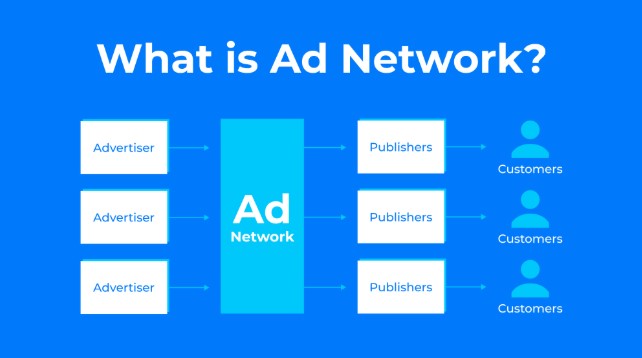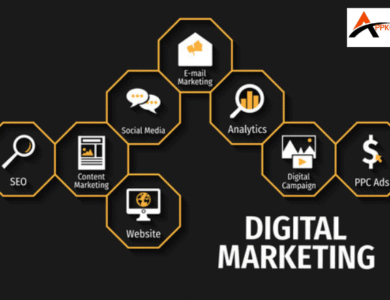
If you’re still pouring your budget into one or two marketing channels and hoping for big results, you’re leaving a lot on the table. Marketing today isn’t about picking a single platform and sticking to it. It’s about precision, reach, and scale. And that’s exactly where ad network platforms come in.
They don’t just help you run ads. They unlock access to massive audiences, streamline your campaigns across multiple channels, and give you far better control over your ad spend.
Whether you’re managing campaigns in-house or working with a team, if you’re not using an ad network platform, you’re likely working harder for less return.
What Is an Ad Network Platform, Exactly?
Let’s start with the basics. An ad network platform is a service that connects advertisers with publishers. It helps place your ads across a wide range of websites, apps, or other digital spaces by aggregating available ad inventory. Instead of negotiating with individual websites or channels, you work with one network that distributes your ads for you.

know The key benefit? Scale and reach. You get access to a massive pool of potential ad placements, often with targeting and performance tools baked in.
These platforms typically work with:
- Display ads – Banners, images, and visuals shown across websites and mobile apps
- Video ads – Pre-rolls, mid-rolls, or standalone video placements
- Native ads – Blended ads that match the look and feel of a website or app
- In-app ads – Ads shown within mobile applications
- Programmatic ads – Automated, data-driven ad buying across channels
Why Ad Network Platforms Should Be Part of Your Strategy
1. Broader Reach Without More Complexity
Instead of manually handling relationships with different ad publishers, you can centralize that entire process. One platform gives you access to thousands of publishers. That means less back and forth, fewer contracts, and a much faster launch time for new campaigns.
More importantly, your ads aren’t limited to a single channel. They appear across multiple environments, allowing you to reach people where they already spend time.
2. Smarter Targeting, Better Results
Ad network platforms don’t just spray ads all over the internet. They use data to place your content in front of the right people. You can segment by location, device, time of day, interests, behavior, and more. This level of targeting means you can stop wasting impressions on people who are unlikely to convert.
You can also use retargeting to reconnect with users who visited your site but didn’t take action. Combined with dynamic creatives, that creates a powerful loop for conversions.
3. Real-Time Optimization and Reporting
Manual advertising comes with delays, guesswork, and limited insight. Ad network platforms give you real-time data on what’s working and what isn’t. You can monitor impressions, clicks, engagement rates, conversions, and cost efficiency in one place.
That means:
- You spot underperforming campaigns early
- You shift budgets based on performance, not gut instinct
- You learn fast and adapt quickly
Whether you’re running awareness, lead generation, or conversion campaigns, performance visibility matters. With a network platform, that visibility is built in.
4. Better Budget Control
One common misconception is that using an ad network platform makes things more expensive. In reality, it often saves money. By buying media programmatically or in bulk, platforms often offer better rates than if you were dealing directly with individual sites or apps.
You can set spending limits, manage daily or lifetime budgets, and adjust as needed. Combined with targeting, this ensures that every cent works harder for your goals.
5. Flexibility Across Formats and Devices
Today’s users jump between mobile, desktop, and tablet constantly. A strong marketing strategy needs to meet them on all those devices with consistent, optimized messaging. Ad network platforms are built for this kind of flexibility. You’re not stuck re-sizing ads manually or reformatting content. The system handles that for you.
You also get access to multiple ad formats without the need to start separate campaigns. That makes A/B testing and creative experimentation much easier.
What Happens When You Skip It?
Sticking to manual buying or single-platform ads might feel easier at first, but it limits your ability to scale. Here’s what often happens when businesses avoid ad network platforms:
- Limited exposure – Your ads show up in the same places, to the same people
- Slower optimization – Without integrated data, improving performance takes longer
- Wasted budget – Poor targeting means paying for impressions that don’t convert
- Creative fatigue – Audiences see the same ad too often, and results drop
If you’re serious about growing your visibility, increasing leads, or driving more sales, these are real roadblocks.
When Should You Use an Ad Network Platform?
It’s not about the size of your business. Whether you’re running small campaigns or managing national-level media budgets, an ad network platform can improve how efficiently you run ads.
It makes sense to use one if:
- You want to run ads in more places without managing dozens of accounts
- You need better data to improve campaign results
- You’re trying to stretch your ad budget further
- You want to expand to mobile, video, or display formats
- You need to run performance-based campaigns and track ROI clearly
The key is understanding how to use the platform strategically. Simply plugging in a budget and hoping for clicks won’t work. But used properly, these systems become a central part of a high-performing marketing engine.
A Quick Checklist Before You Start
If you’re thinking about integrating an ad network platform into your strategy, here are a few points to consider first:
- Clear objectives – Know whether you want traffic, leads, sales, or something else
- Target audience defined – Segment based on behaviors, demographics, or interests
- Budget allocation – Set a flexible spend range based on campaign goals
- Creative assets ready – Prepare multiple ad versions for testing
- Tracking systems in place – Make sure conversion tracking is set up
Skipping these steps usually leads to poor results. Take the time to prep properly, and you’ll see better returns faster.
Make It a Core Part of Your Strategy
Ad network platforms aren’t just another tool to add to your stack. They fundamentally change how you run, measure, and scale digital advertising. With more control, better data, and wider reach, they give marketers the edge needed in a noisy, competitive landscape.
Whether you’re launching new campaigns or improving old ones, building your strategy around a strong ad network platform can make your efforts far more effective.
Don’t treat it like an optional add-on. Build your marketing engine with it at the center.
Conclusion
In today’s ad network platforms are no longer optional—they’re essential. From reaching hyper-targeted audiences to optimizing ads with real-time data, these platforms empower businesses to scale faster, smarter, and more efficiently.
Whether you’re a startup or an enterprise brand, integrating ad networks into your core marketing strategy can unlock new levels of visibility, engagement, and conversion. The key lies in choosing the right networks, crafting compelling creatives, and continuously testing and optimizing. Make ad networks a central pillar of your marketing and watch your ROI soar.



